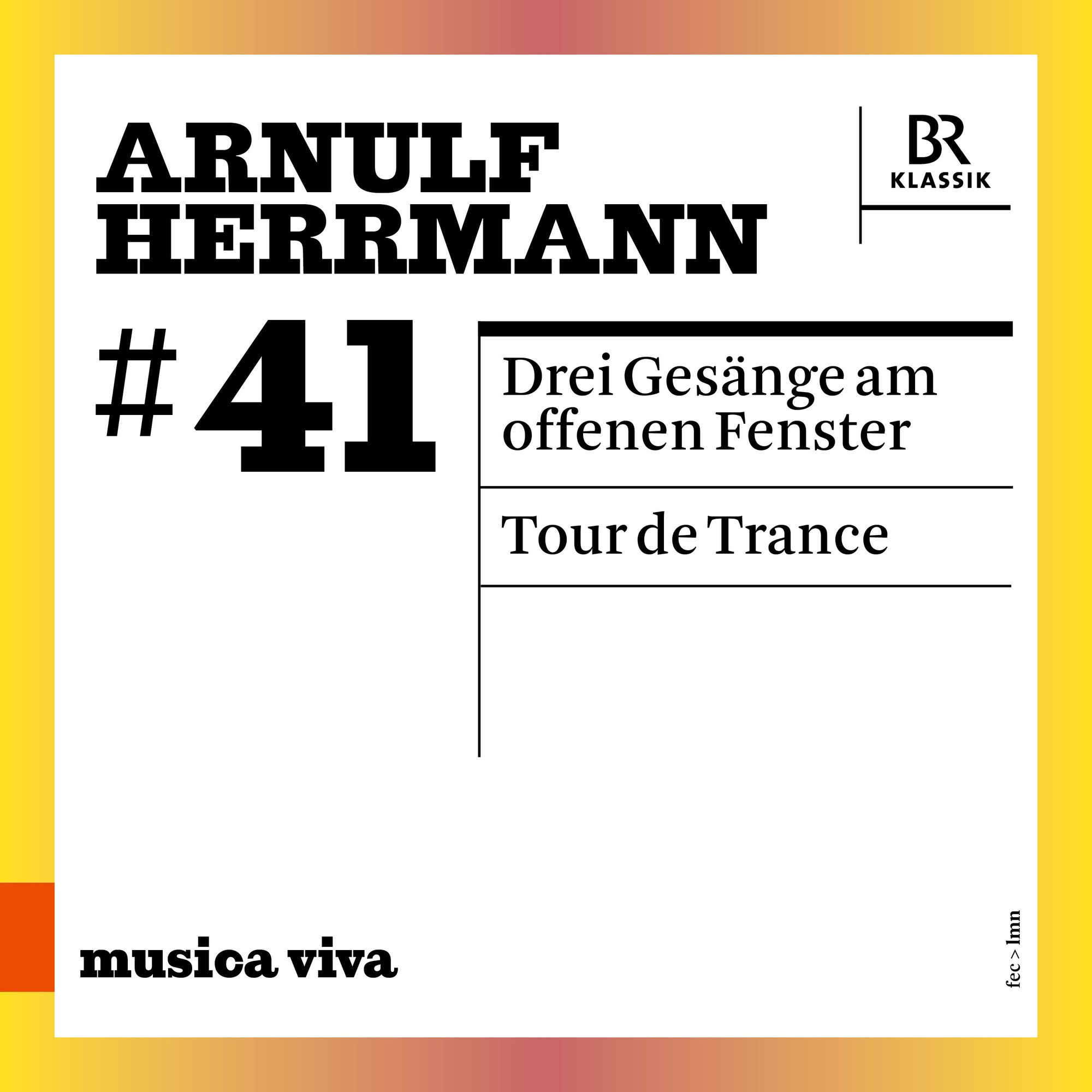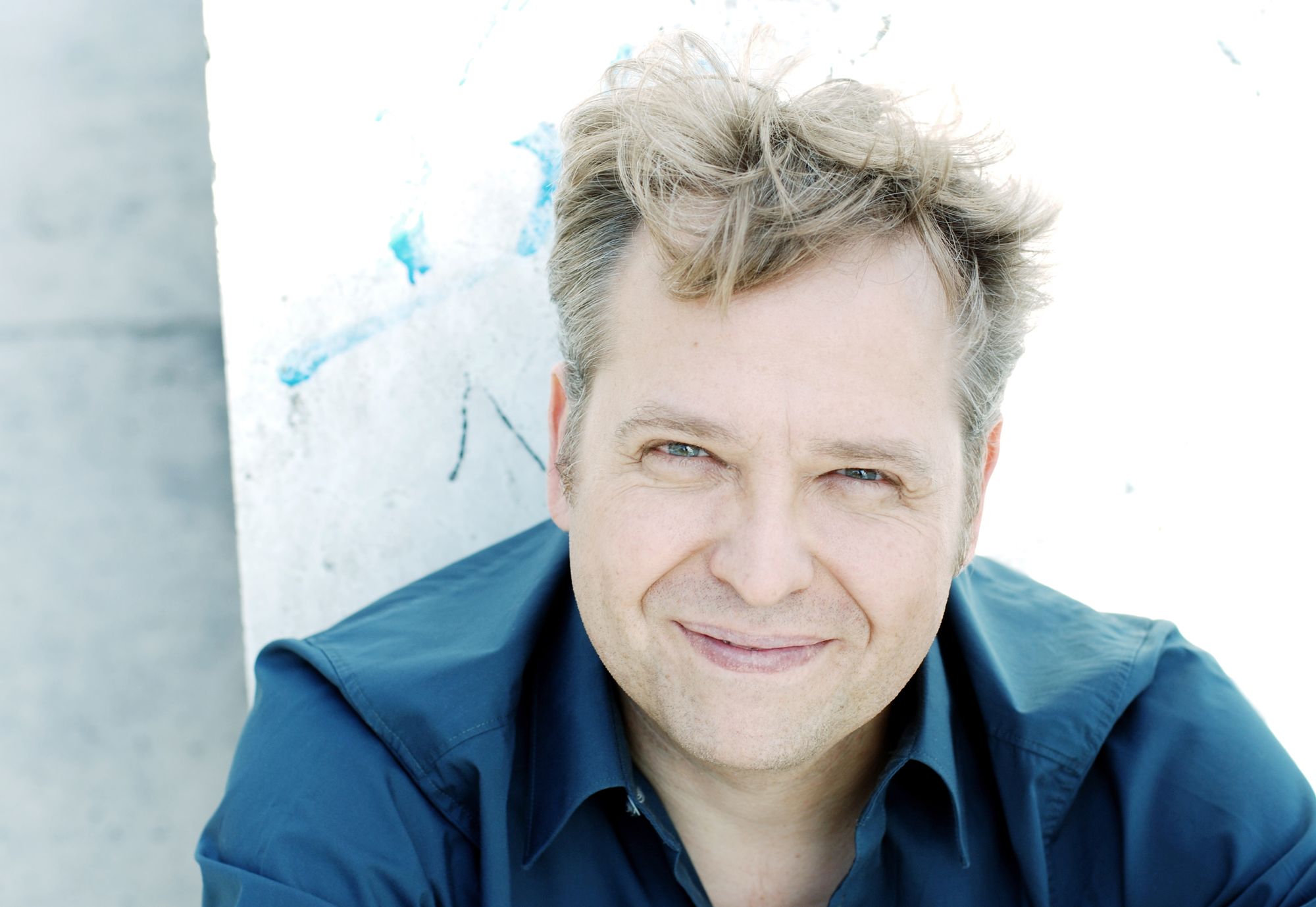The vocal music of Arnulf Herrmann
This is a compelling disc - it draws you in, making repeated listening both necessity and pleasure

This is not easy listening; but it is rewarding listening. Bavarian Radio’s label BR Klassik, in its “Musica Viva” series, continues its fearless explorarion of the best of contemporary music by living composers: previous posts have included a disc of music by Berlin-based Rebecca Saunders (Still; Aether; Alba) and Enno Poppe (Fett; Ich kann mich an nichts errinern).
Born in Heidelberg in 1968, Arnulf Herrmann studied piano, music theory and composition in Munich, Dresden, Paris and Berlin, where he completed his studies in 2002. In 2003, he gained a teaching position for theory, analysis and aural training at the Hochschule für Musik Hanns Eisler in Berlin; from 2004, he was the main teacher for composition there and, from 2006, also lectured on instrumentation and analysis. Since 2014, he has held the chair of composition at the Hochschule für Musik Saar. (The link inthsi paragraph takes you to the Wikipedia article on himl Herrmann’s own website is here.)
Herrmann mainly composes ensemble and chamber music, but there are also pieces for orchestra and the stage. In 2012, his opera Wasser (“Water”) premiered at the Munich Biennale; excerpts from it had already been heard in 2011 as part of the Wittener Tage für neue Kammermusik. In 2017, his opera Der Mieter (“The Tenant”) premiered with great success at the Frankfurt Opera, which had commissioned the work. Numerous international contemporary music ensembles perform his works at music festivals such as the Donaueschinger Musiktage, the Wittener Tage für neue Kammermusik, and Wien Modern.

The first piece we hear is the Drei Gesänge am offenen Fenster (“Three Songs at the Open Window,” 2014) for soprano and large orchestra, after texts by Händl Klaus and the composer himself. It was commissioned by musica viva/BR. What we have here is the live recording of its premiere, on October 24, 2014. The performers are Anja Petersen (soprano) and the Symphonieorchester des Bayerischen Rundfunks - the Bavarian Radio Symphony Orchestra - conducted by Stefan Asbury.
The three songs are used in Herrmann’s opera Der Mieter (The Tenant), as Markus Böggemann explains in his excellent note:
In Arnulf Herrmann’s opera “Der Mieter” (The Tenant), which premiered in 2017, these orchestral songs form special dramaturgical crystallisation points. They open up a different time level within the plot that seems to be both memory and anticipation, and they mark the stages of the protagonist’s progressive loss of self.
The protagonist teeters at a window; Death seems a distinct possibility. Let’s listen to the first song. The text is below:
stille : stand : der körper : an :
der luft : die luft : stand : zitternd : an : und an : und : an : und nahm :
silently : the body : stood :
in : the air : the air : stood : shook :
on : and on : and : on
There is the most remarkable variety here, and one can also hear the care Herrmann puts into his scoring thanks, in no small measure, the sheer excellence of the Bavarian Radio Symphony Orchestra (one of the World’s great orchestras) and Asbury. The grungy brass opening, low, shifting like some unformed mass in search of a coalescence, soon finds itself against the purest high soprano note you will ever here. As Petersen’ s line seeks to find a melodic shape via circlings around a pitch, Herrmann sets up a registral distance - expanse - between brass and voice that requires filling. That “filling” is provided by a recurring figure: almost mechanical, quietly ticking percussion against more rhythmic high voice The use of temple blocks add to the unique sound. Soprano Anja Petersen is simply superb. The text is haunting (“silently, the body stood / in the air...”); the music scarcely less so.
Here, now, is the second song:
The mechanical nature contiues, against punctuating wind and brass chords. No surprise, as the poem begins similarly:
stille : stand :
nahm : still : e :
stand : der körper
silent : stood :
took:silent:ly:
the body : stood :
In the opera, the temple blocks represent the knocking of neighbours that the protagonist finds increasingly unbearable.
Throbbing becomes hammering in the third and final song, where those registral contrasts of high and low that opened the set now becomes brutal shards of high and low sonority. The text is harrowing, and so is the music, especually when heard with such laser focus from all concerned as here:
wie sie : in den ohren : singt : daß es : meinen körper : nahm : es : ist : die luft :
as it : sings : in my ears : so it :
took : my body : into : the air :
One can only imagine the power of this World Premiere, when heard live in the hall. The musical elongation of the final fall, the sheer power of the forces in a movement that moves fron near inaudibilty to primal scream and percussion frenzy. The performance is virtuoso, pure and simple; the effect, devastating.
Tour de Trance, on a text by Monika Rinck, was commissioned by the Musiktage Hitzacker, and premiered in 2017. It is perfromed in two versions, the first for soprano and piano .This studio recording from September 19, 2022 is one of the new versions of the song cycle from that year. Anja Petersen sings, with Björn Lehmann accompanying on the piano.
The piece opens with mid-low dissonances on piano, harsh, the chord’s constituent intervals close and grating. Memory was a vital part of the text of Der Mieter and the songs above; it recurs here as structural determinant, too. The version with piano is only six and a half minutes, as opposed to the 28 with orchetsra. Two different views of the same text, therefore. Here is the version with piano - Björn Lehmann is the superb pianist, a true musician with the most senseitve of touches:
Here is a performance video of Tour de Trance, the World Premiere (as we have it on the disc, but here we can watch it):
The orchestral version begins far more punchily and rhythmically in the orchestra. In charge of the BRSO here is the well-respected Spanish conductor Pablo Heras-Casado, who extracts maximal expresison from his players while maintaining laser-like textural clarity. The first movement is entitled “manische Episode” (Manic Episode). and is an orchestral depiction of mania in all its forms. Dark shadows loom behind an active musical surface:
There is a transitional aspect to the timbral and harmonic softenings of the second movement, yet the very lunimosity of Herrmann’s harmonies prevent a designation of the movement as ransitional. It is a vibrant, stunning timbral tour de force, not least in a moment at which the whole orchestra seems to slowly churn, seemingly rotating its harmonic structures like a kaleidoscope in slow motion:
The text of the poem is once more remarkable. Try this:
my task, she said, was posoning time / how everything turned, repeated, expanded and rotated, heat was a space so vast,
so disastrously large, was an arena
in which the wreckage of objects drifted, savage impacts in the distance, no one heard, everyone felt, the pulsing aftershocks.
.. and, indeed, Herrmann entitles the third panel of the work as “poisoning time”. The predominance of poetic imagery that can easily be realted to music is striking in itself: the very concept of “time” (temporal space as well as, for example, time signatures or inded of time notated in a score); and of phrases “turning” (as in the onsessively repeated neighbour-note oscillations of the first movement).
The wordless entrance of the soprano, against a slow ticking and punctuating sforzato brass chords speaks of matters primal. Again, Petersen’s purity of voice is remarkable - there is a moment when a single tone from her seems to morph into an orchestral instrumentm then back again. The end has a STravinsky element to it, a sport of post-Rite chthonic britality.
The final movement, also called ”Tour de Trance,” is utterly compelling. There is something (Alban) Bergian about the density here (think the Drei Orchesterstücke, Op. 6; link to a performance by Pierre Boulez and the BBC Symphony Orchestra) while the vocal line reminds me on occasion of the Altenberglieder, Op. 4 (link to a performance by the South West German Radio Symphony Orchestra under Ernest Bour, with solist Halina Lukomska). And here is that final movement of Tour de Trance:
This is a compelling disc - it draws you in, making repeated listening both necessity and pleasure. Recording standards are of the highest, and Markus Böggemann’s notes are incredibly helpful - although I do wish his paragraphs weren’t quite so long (one is full theee pages of small type).
